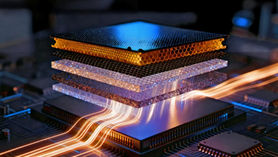Fuel-free energy is a strategic path for energy transformation in the 21st century
- https://dni24.com
- Apr 20
- 5 min read
The rapidly growing race to create innovative technologies for generating electricity without using fossil fuels demonstrates the high importance of this area for the economies of different countries. Such technologies are united by a common name - fuel-free.

Currently, the most popular of these are wind and solar power. Photovoltaic cells have long been considered the cutting-edge source of clean energy because they convert sunlight into electrical energy. These cells work well in direct sunlight, but despite their high speed, sunlight is still limited by obstacles. Shadows, weather conditions, atmospheric dust, and geographic orientation all affect the continuity and reliability of solar energy. Over the years, engineers have tried to overcome these limitations with various technical solutions: angle trackers, storage, and hybrid arrays. However, the main problem remains the same: photovoltaic energy is only available intermittently, depending on location and time of day. Even after decades of research and development, the efficiency of traditional solar panels remains relatively low. Monocrystalline silicon panels used commercially average around 20–22% efficiency. Advanced multi-junction prototypes have been developed in the lab that can approach 47% under concentrated illumination. However, these high performance levels come at a significant cost, dependence on rare earth materials, and environmental impacts. Over time, solar panel performance declines due to dust (contamination), spectrum mismatch, temperature coefficients, and micro-cracks. PV systems also require a large surface area. For example, a 5 kW solar installation on a home’s roof may require over 30 square meters, depending on its orientation, tilt, and shading profile. In densely populated urban areas, usable roof area can be an issue. Even in optimal geographic conditions, solar energy is produced at a lower output during cloudy weather or during the winter months, when solar radiation intensity is significantly reduced. In addition, PV systems do not produce energy at night, and their daily production schedule rarely matches their consumption schedule. This means that they must either be connected to the grid or use expensive storage systems such as lithium-ion or flow batteries. However, such systems create their own environmental, economic, and fire safety challenges. Thus, due to the intermittent nature of generation, photovoltaic energy requires constant compensation at the system level.
The operation of wind turbines also depends on the wind strength and has an intermittent (sawtooth) nature. Due to this dependence on weather conditions, both mentioned fuel-free power generation technologies are seriously limited in the operation of power supply systems, especially in terms of maintaining the frequency of the current. Additional technical solutions, such as energy storage, significantly affect the competitiveness of these technologies.
In the near future, the development of new technologies for generating electricity that are independent of weather conditions may significantly reduce the competitiveness of solar and wind energy. Among the most modern technologies for generating electricity without the use of fuel, it is worth mentioning the Neutrinovoltaic technology developed by the Neutrino Energy group of companies. According to the company's president Holger Thorsten Schubart, specialists are currently working on finding the most productive, efficient and economical industrial method for applying single-atom layers of materials to metal foil. These layers are part of a multilayer nanomaterial, which is an alternating layer of graphene and doped silicon. This nanomaterial converts the energy of particles of the surrounding invisible radiation fields, including neutrinos, into electric current. Since radiation fields are always and everywhere present, the design of Neutrinovoltaic systems allows them to operate continuously and silently, regardless of environmental influences.

Neutrinovoltaic technology decouples energy production from visual, spatial and climatic constraints and generates electricity 24/7 in base mode. Graphene and doped silicon are arranged in ultra-thin layers on a metal substrate, designed to maximize the quantum vibrational resonance that occurs in each graphene layer. Observation of a graphene layer through a high-resolution microscope reveals vibrations similar to waves on the surface of the sea, i.e., when adjacent regions alternate between concave and convex curvature. The stronger the exposure to energy and thermal fields, the stronger the vibrations of the graphene atoms, and hence the frequency and amplitude of the oscillations of the "graphene waves". Theoretical studies explain that the source of this process is electron-phonon coupling, since it suppresses the rigidity of the long-wave bending and amplifies out-of-plane fluctuations. Harmonic oscillations of "graphene waves" that go into resonance are, in fact, the work performed, necessary for the transformation of thermal (Brownian) motion of graphene atoms and the energy of particles of the surrounding fields of invisible radiation, including the kinetic energy of neutral neutrino particles, into electric current. As in the currently produced electric generators installed at power plants, the developed Bedini power generation schemes and other schemes of magnetic engines of fuel-free power generation, the occurrence of electromotive force (EMF) occurs in each graphene layer due to the interaction of magnetic and electric fields. However, the fundamental difference is that in Neutrinovoltaic technology, the pulsating interaction mechanism occurs not as a result of rotation of the rotor with a magnetic coil, but in the process of microvibrations of graphene in the nanomaterial, which is a fundamentally different physical principle of the occurrence of EMF. The EMF arising in each graphene layer makes electrons flow in one direction, i.e. an electric current arises. The movement of electrons in one direction is achieved by applying film coatings of each layer with alloying elements, creating a p-n junction that allows electric current to pass in only one direction, i.e. a thin-film diode effect occurs. The multilayer nature of the nanomaterial provides a solution to the problem of obtaining the maximum possible electrical power from a unit of surface, since one layer of graphene cannot provide sufficient power for industrial use.
Neutrinovoltaic devices are completely hermetic and operate due to penetrating radiation, which ensures their protection from photonic wear. Doped silicon layers and graphene sheets, which are used in this case, have chemical stability and high structural strength. These materials are not affected by moisture, light spectrum or air particles.
Each civilization is defined by the energy sources it uses. Over the centuries, we have seen how access to energy has expanded: from firewood to fossil fuels, from hydropower to solar energy and wind generation. With each step, we have reduced our dependence on one energy source and increased our access to another. Today, we are witnessing a new phase in energy history, led by the Neutrino Energy group of companies. This is not just an improvement on existing technologies, but a complete rethinking of them. We are moving from using energy that can be seen, predicted, and compensated for, to using energy that simply is.





















































Comments